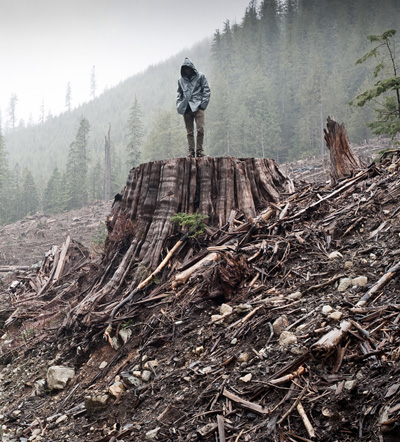
Protester by T.J. Watt, Courtesy of Oscilloscope Laboratories

When injustice occurs, is there anyone there to notice? That’s the question at the center of Marshall Curry’s documentary “If a Tree Falls,” in relation both to devastation to the environment that goes on unabated in the face of peaceful protest and to the terror prosecution of a generally mild-mannered man with a secret past involvement in acts of arson meant to put a dramatic end to that ecological harm. Curry, an Academy Award-nominated director, follows the story of Daniel McGowan, now serving a seven-year prison sentence for his actions as a member of the radical Earth Liberation Front, which was once branded by the Justice Department as the nation’s greatest domestic terrorism threat. But the filmmaker tells
PLANET that if audiences bring an open mind to his latest film, (which itself has been shortlisted for this year’s Oscars), they’ll hear arguments about a conflict more nuanced than it might appear on its surface.
“At the height of the movement, people had very heated passions,” Curry said in an interview, discussing the militant environmental activism that manifest itself in the mid-90’s.“ But I think in retrospect, whether it was members of the Earth Liberation Front like Daniel or whether it was the prosecutor who put them in prison, they ultimately saw the complexity in that story, and that’s what our goal was in making the film, to capture some of that complexity.”
(more…)
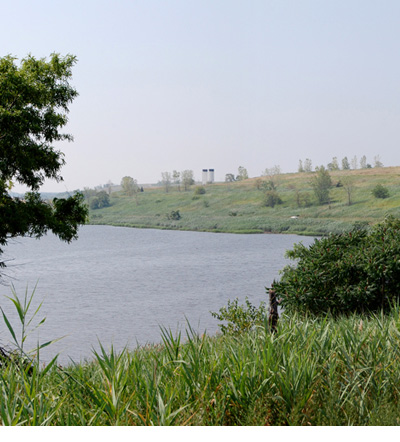


If Fresh Kills sounds like a less-than-picturesque place to visit, that may have something to do with a misreading of the Middle Dutch word “kille” as denoting something sinister, when in fact it refers innocently enough to a body of water. It’s the same negative association that once compelled PETA to suggest replacing the town of Fishkill, NY’s vaguely piscivorous name with the more peaceful-sounding Fishsave. And yet, in the case of Fresh Kills, any disagreeable images the name may conjure have been completely accurate for much of the past six decades. If you hear “Fresh Kills” and think “a pile of hollowed-out chicken carcasses newly delivered from Chinatown,” you’re pretty much spot on.
Next year, the Land Art Generator Initiative (LAGI) arrives on New York City’s Staten Island, with the goal of turning a small portion of the 2,200-acre former landfill called Fresh Kills (at one time the world’s largest) into two things it hasn’t been in recent history: aesthetically pleasing and a source of cleanliness. The site was closed to waste disposal in early 2001, although briefly reopened to receive the remains of the World Trade Center after the 9/11 attacks. Now that the New York City Department of Parks & Recreation is engaged in a 30-year project to transform the land into a park three times larger than Central Park, LAGI’s organizers plan to add their own contribution to the repurposing of the dumping grounds with a piece of public artwork that generates renewable energy.
(more…)
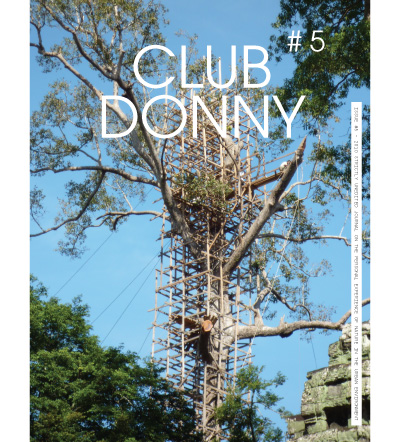
Cover of Donny 5 - Angkor, Ta Phrom temple by Susan Rüsseler

With an ever-expanding portion of the global population migrating to cities, it is urban environments that represent the known world for so many. But the realm of experience that someone comes to have in an urban space can actually share a fair amount with what others encounter in places far removed from the busy centers of human development.
That’s the idea behind an exciting new journal on the personal experience of nature among urban dwellers. Developed in 2008 by three Rotterdam-based Dutch editors,
Club Donny is published biannually as a global survey of the ways in which city life intersects with the natural forces that often prove to be even more powerful than the engineering marvels of steel and concrete dominating most visions of the modern metropolis.
“We offer a platform that aims to bring into the limelight observations, coincidences, stories and encounters of the obvious and sometimes absurd existence of nature in cities,” co-founder Ernst Van der Hoeven tells
PLANET.
(more…)

All photographs by Mathias Braschler and Monika Fischer, courtesy of Hatje Cantz. Juliana Pacco Pacco, llama herdswoman. Paru Paru, Peru.

Climate change is notoriously difficult to illustrate. Shifts in sea level, soil acidity, and air composition occur slowly and over such long periods of time that they can’t grab headlines the way more dramatic, photographable events like wars, debates and protests do. Photographers Mathias Braschler and Monika Fischer have brought the issue to the forefront by documenting men and women in rural communities around the world whose way of life has been unravelled by climate change. Their book of portraits and interviews, The Human Face of Climate Change, is a powerful political document, giving an inescapable, emotional face to the issue.
The color photographs of these men and women are vivid, but what’s more powerful is their personal testimony. Each one has made a brief, page-long statement, that’s been translated into English in simple, declarative sentences that emphasize the gravity of what they’ve seen. All have observed climate change in their own communities and in their own lifetimes, over a span of just ten or twenty years. And all of them – in the Americas, Africa, and Asia — have the same stories to tell: their bodies of water are shrinking, their shorelines are eroding, their glaciers are melting, and their soils are becoming less fertile. Some of the evidence is tragic.
Slideshow
(more…)

Bob Lutz by John F. Martin/ Courtesy: Penguin Group USA and © GM Company/GM Media Archives

With the L.A. Auto Show taking place this week, PLANET spoke to a genuine auto visionary. He may not believe in man-made climate change, and he may rail against what he calls the media’s tendency to smother the makers of hybrid vehicles like Toyota in superlatives for their environmental correctness. But in the last decade, there is arguably no one else in Detroit who has done more to promote clean, efficient cars than Bob Lutz.
After stints at other automakers, he rejoined his first employer, General Motors, as vice chairman in 2001 and oversaw the development of the Chevy Volt, a plug-in gas/electric hybrid. The car’s $40,000 price tag puts it out of reach for most drivers, and GM is unlikely to meet its target of 10,000 sales by year’s end, yet the Volt denotes an important if tentative step nevertheless. Now 79 and retired, Lutz talked openly about the events covered in his book, Car Guys VS. Bean Counters, including the past failures of the American auto industry and the road ahead to a future devoid of gasoline:
(more…)


Solar panels on the campus of UC San Diego Credit: Erik Jepsen


Sunny optimism about renewable energy’s prospects has rarely been abundant in Washington. But just as the business of clean energy is poised to take off, a cloud of suspicion over the White House’s stimulus support of a photovoltaic manufacturer has engulfed the Capitol and diverted attention from new developments taking shape within the solar industry that are worthy of being championed.
As covered ad nauseum, the Fremont, CA-based company Solyndra went bankrupt in September after having earlier received a $535 million federal loan guarantee. Last week, the Republican-led Energy and Commerce Committee voted to subpoena documents from the White House relating to the company. Now armed with over 85,000 pages of documents already in its possession, the committee is almost sure to uncover some amount of mini scandals and embarrassing pieces of communications. But what the investigation certainly won’t reveal is the other solar energy story that’s waiting to be noticed out in the light of day. It’s the story of our next great energy resource slowly but surely coming into its own.
Here then, for the benefit of our Congressmen and anyone else who might care to notice, are four examples of meaningful research and development advancements being made in solar technology right here in the United States. Sunny optimism is a potential side effect, so proceed with caution.
(more…)
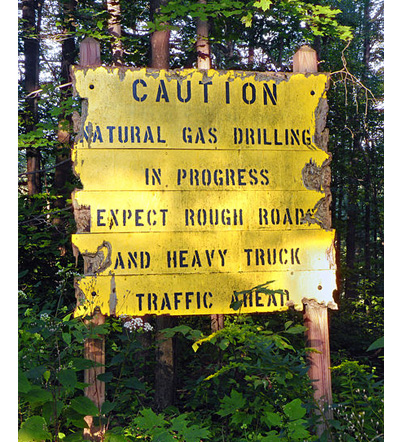

“The deeper you go, the more good things you learn.” So says the Energy Tomorrow lady in the oil and gas advertisements that have blanketed the airwaves in recent years (except during the aftermath of the BP spill when she went into temporary hiding). The ad campaign, created by an energy trade association called the American Petroleum Institute, is meant to promote the benefits of tapping into domestic resources, citing in particular the spread of jobs. And at the very heart of the campaign lately is the case for natural gas.
Listen to the president discuss the issue of gas drilling, and he’s just as optimistic: “The potential for natural gas is enormous,” he declared in an energy policy address in the spring at Georgetown University. After abandoning his administration’s efforts to install a cap and trade pricing system, and following the Democrats’ loss of their majority in the House, natural gas was the common ground on which Obama was willing to stand alongside Republicans. In the same speech, he called on Congress to pass a bill to “achieve the goal of extracting natural gas in a safe, environmentally sound way” and joked that his energy secretary was tinkering with extraction methods in the garage on weekends.
That political common ground and the speed at which private companies are moving in to capitalize even in the absence of federal
(more…)


With the printing of On the Revolutions in 1543, Copernicus didn’t so much set the world on fire as he did set it spinning. But there were those in his time, not quite ready to receive his pioneering theories about the cosmos, who, had he lived longer, may have wished to see the astronomer himself set ablaze (à la Giordano Bruno). In her new book, A More Perfect Heaven, Dava Sobel tells of the universe-altering ideas that Copernicus put forth and the high stakes that nearly kept him from sharing his life’s work.
Breakthroughs in science ask us to imagine the unimaginable. And in 16th Century Europe, the notion of a heliocentric solar system wasn’t merely unimaginable, it was downright heretical. The conflict at the center of Sobel’s book is the decision that Copernicus had to make of whether to publish his discoveries and risk whatever reaction they might provoke. For the first time, Sobel, a science writer, also serves as playwright for a portion of the book and dramatizes the conversations that Copernicus had with Georg Joachim Rheticus, the Lutheran mathematician who ultimately convinced him to make his theories known. PLANET spoke to the author about bringing characters in scientific history to life for real this time:
(more…)

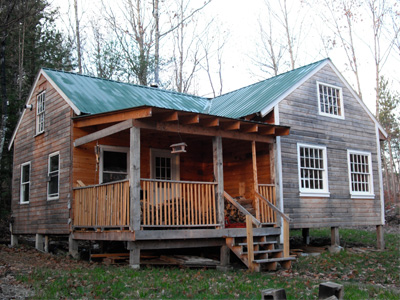
Finished Outside View/Courtesy: Lou Ureneck


For most people, the thought of building a home from scratch would be enough to lay the foundation for a mid-life crisis. For Lou Ureneck, building the framework for a cabin in the woods is precisely the means for avoiding such a breakdown. While he gathers the various items he’ll need to complete the job, he also assembles a story to go along with the assembled structure, in which he tracks the course of the project, from the point of inspiration to his family’s first Thanksgiving dinner inside the cabin’s walls. It makes for a charming new memoir, based on a blog he wrote for The New York Times during the construction process, with the straightforward title Cabin.
Ureneck’s motives are more complex than simply wanting a place for getting away. He conceives of the idea to build his very own cabin in the deep woods of Maine, not far from his brother Paul’s Portland home, as a response to the spate of bad fortune and difficult transitions taking hold of his life in the midst of his middle aged years – a failed marriage, a recently deceased mother, a newly empty nest, and a health scare of his own to top it off. This new getaway house, he figures, would provide respite from the complications of the outside world. Most likely, it would also reconnect him to his brother’s family after too many years of distance, both geographic and emotional. And having his brother’s family around might also provide some vital manpower from the pouring of the concrete foundation piers to the building of the timber-frame structure, the rafters and ultimately the roof.
(more…)

Gwyneth Paltrow in Contagion/Warner Brothers

Blowing on dice has never looked so terrifying. Seated at a casino table over mixed drinks in Hong Kong, Gwyneth Paltrow is the angelic host for a deadly virus unknown to the world’s health agencies. Within days, she will be dead. (Don’t worry – it’s a spoiler that’s also given away in the trailer.) By the time of her vividly filmed autopsy, the infectious agent will have found its way to cities as widespread as Chicago, London, and Tokyo, raising the concerns of the expert few who will have begun to grasp the nightmare situation threatening to emerge.
“Contagion” arrives in movie theaters this weekend, just as the nation commemorates the 10-year anniversary of one of its most fully realized nightmare scenarios. Following a decade informed by an epidemic of epidemics, whether in the form of terrorist attacks and endless wars, environmental shocks, and financial collapses that spread like viruses from one market to another, director Stephen Soderbergh and screenwriter Scott Z. Burns have picked one of the less-publicized dangers of the modern world as the basis of their film. Now the secret’s finally out – Gwyneth Paltrow isn’t the only one in trouble.
Just how bad could things get? If we think we’ve seen the worst of the biohazard strain of international crises in the past decade, based on our dealings with the bird flu or H1N1 or SARS, the filmmakers emphatically tell us to think again. It could be a lot worse. Much worse, in fact. Worse to the point that parts of this movie bring to mind George Romero’s zombie classics.
(more…)





 Facebook
Facebook Permalink
Permalink Digg
Digg Reddit
Reddit LinkedIn
LinkedIn StumbleUpon
StumbleUpon Tumblr
Tumblr













